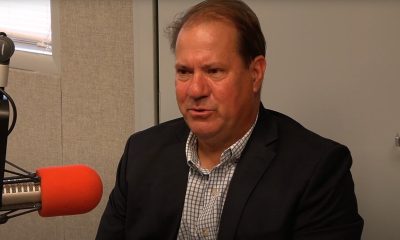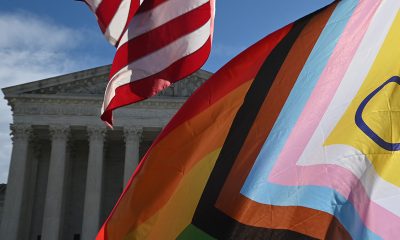Opinions
Supreme Court must be enlarged and Congress needs term limits
Younger generations deserve a say in their future
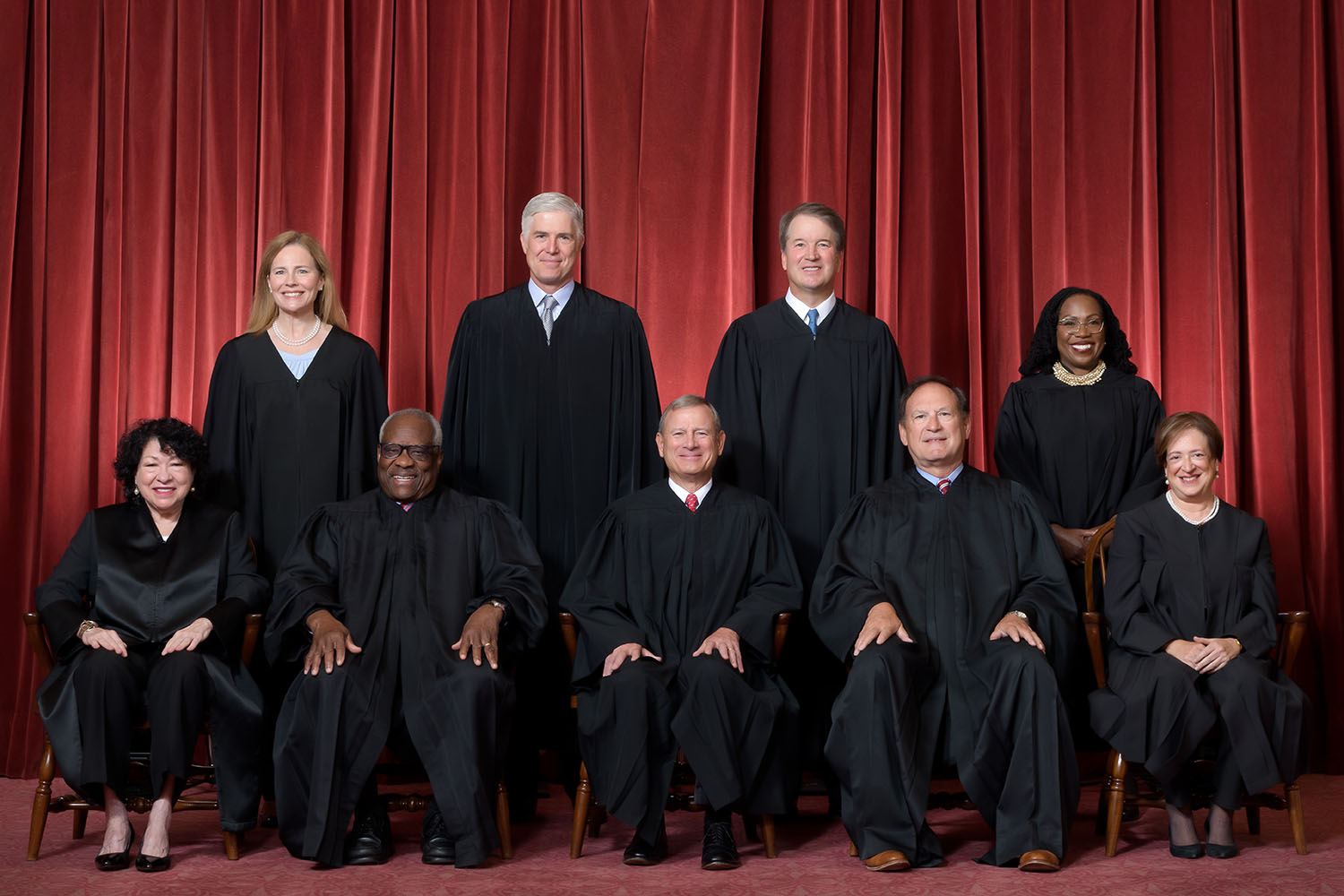
I will surely be challenged for these views, not the least being called ageist. But as someone older myself, I am comfortable with that. It is not that I think older people are not fully capable of functioning at a very high level; they are. I just believe we must let the next generations, who will be living much longer with the results of what government does, have more of a role in determining what that is.
Based on what we have seen of this Supreme Court, its willingness to overturn decades of precedent, the time has come to expand the court for a rational balance. In addition, we should set 24-year term limits for justices, or retirement at 80, whichever comes first. Changing the number of people on the court is not a new idea. The number of persons on the Supreme Court has been changed six times since our country was founded. The U.S. Constitution is silent about how many justices should sit on the Supreme Court.
“After the Civil War and Lincoln’s assassination, Congress clashed with Lincoln’s successor, Andrew Johnson, who was rapidly undoing the “Radical Republicans” plan for Reconstruction. To limit Johnson’s power, Congress passed legislation in 1866 that cut the number of Supreme Court justices back to seven, all but assuring that Johnson wouldn’t have the opportunity to fill a vacant seat. The last time Congress changed the number of Supreme Court justices was in 1869, again to meet a political end. Ulysses S. Grant was elected president in 1868 with the backing of congressional Republicans who hated Johnson. As a gift to Grant, Congress increased the number of justices from seven back to nine, and Grant gamely used those picks.” On today’s Supreme Court Clarence Thomas has now served 32 years, and Roberts and Alito, 19 years each. Then there was Ruth Bader Ginsburg. She was 87, and had served 27 years, when she died, clinging to her seat when it was known how ill she was.
It is only recently I have come to this conclusion regarding the Supreme Court, and on term and age limits for the Congress. We are seeing too many older men, and women, cling to power. They may still have the mental acuity to perform their jobs, but entire generations aren’t serving because they refuse to leave. There is incredible power in incumbency, and we are seeing it abused. We are asking young people to vote for candidates old enough to be their grandparents, or great-grandparents. Some say they should revolt and change that. But the fact is, so much money is now in the game, the unlimited amount people can spend on their own campaigns, and collect from others, makes that nearly impossible. It’s rare to be able to fight incumbency and wealth. Yes, it can happen, as in the case of Maryland Congressman David Trone (D-Md.), who is 68, and tried to buy a United States Senate seat in Maryland with $60 million of his own money. He lost his primary to Angela Alsobrooks, who is 53, whose campaign had less than a tenth of that. But she was a known entity, and elected official, in her own right.
Today, in the 100-member United States Senate, there is one senator over 90, four over 80, and another 10 over 70. I propose we set a limit of four terms, or 24 years, and mandatory retirement at 80. In the House of Representatives, which now has 11 members over 80, and 62 over 70, I would recommend a 12-term limit, or 24 years, and mandatory retirement at 80.
I have had conversations with many young people, and listened to their frustrations with their ability to move forward in politics. Many see the world differently than I do, and my belief is they are entitled to be making the decisions that will impact their lives, and not have the older generations continue to do so. I think being in office for 24 years is enough time to make a difference, and to accomplish what you wanted to do when you ran for office. And if you couldn’t do it, it is time to allow the next generations to try.
The desire to cling to power is natural. For many, the fear of retirement, and not knowing what they will do with their lives, is scary. I think one must plan for that, even politicians. They need to accept they can make a difference, even if not in office, if they really want to.
Peter Rosenstein is a longtime LGBTQ rights and Democratic Party activist. He writes regularly for the Blade.
Opinions
Community must honor all trans people on Transgender Day of Remembrance
Trans people more likely to be disabled, face bias within medical systems.
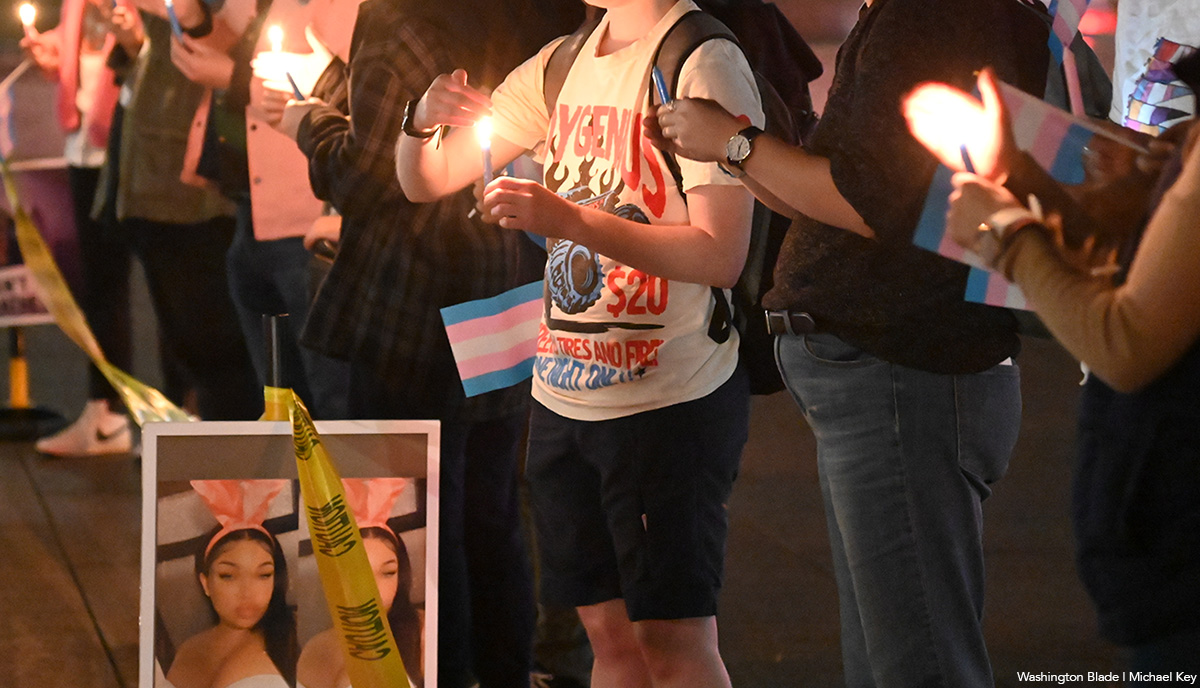
Our community has let marginalized people down. That’s the simple truth we need to hold on this Transgender Day of Remembrance. And, believe me, I don’t say this to accuse anyone. But marginalized trans people — including BIPOC, disabled and neurodivergent people, refugees and asylum seekers — are disproportionately affected by transphobic violence that too often goes unchecked, unreported, and unchallenged. And the wider LGBTQ community hasn’t done nearly enough to change this.
From the very beginning, Transgender Day of Remembrance was about marginalized trans lives.
In 1999, transgender activists Gwendolyn Ann Smith, Nancy Nangeroni, and Jahaira DeAlto founded TDoR a year after the killing of Rita Hester, a Black trans woman, to honor her memory and the memory of all trans people lost to hate-motivated violence. Hester was openly trans, courageous, and ready to speak up against transphobia. Her death was noticed, but not all marginalized trans people are so lucky.
Now, as I prepare a speech for my city’s TDoR vigil — a speech about intersectionality, because I’m a trans, autistic, ADHDer refugee from a mixed background — I’m not even sure where to begin. You could write entire books and academic studies, hundreds of pages, about why and how marginalized trans people are under attack. But none of that fully captures how deeply normalized these risks have become in our daily lives.
We trans people living at multiple intersections have become targets of jokes about the “woke agenda.” If characters like us appear in mass culture, countless people try to convince the world that we can’t be real. When a celebrity like us exists, they’re treated as a curiosity. And meanwhile, the very real violence against people like us goes unnoticed.
It is known that trans adults are more likely to be disabled than cisgender adults, in part because of the failures and biases within medical systems. We also know there is a significant overlap between trans identity and autism for reasons we don’t yet fully understand. But what we do understand is this: disabled trans people and autistic trans people are often denied autonomy, recognition, and basic respect. Worse, we face a bigger risk of violence and hate crime.
And in the context of the modern U.S., this danger is multiplied.
The country is experiencing the largest coordinated wave of anti-trans legislation in its history: hundreds of bills targeting every aspect of trans existence, from healthcare to public spaces. At the same time, the immigration system has become increasingly hostile. When the government targets both trans communities and refugees, trans refugees end up trapped in the gap between two systems that refuse to take responsibility for protecting them.
For many trans refugees, especially autistic and disabled ones, the greatest danger starts not when they are deported, but the moment they enter the U.S. immigration system. U.S. Immigration and Customs Enforcement detention is notoriously unsafe for trans people, particularly trans women who are often placed in men’s facilities, denied hormones, subjected to harassment, or put in solitary confinement under the excuse of “protection.” ICE excluded trans statistics from its public reports, trying to erase trans people on a systematic level, to make this discrimination invisible.
For autistic trans women, the sensory overload of detention — the noise, the lights, the shouting, the unpredictability — can be unbearable. ICE facilities almost never have staff trained in autism, mental health, disability communication, or even basic general and cultural competency. Many autistic trans refugees simply cannot navigate complaint procedures, medical requests, or legal paperwork without support that does not exist inside the system.
The problems don’t stop after release.
The U.S. asylum process demands documentation and formal proof of persecution that many refugees, especially autistic people, people with mental health issues or learning disabilities simply do not have. The violence they experience is often undocumented precisely because they were trans, because they were autistic, or because the police in their countries refused to recognize them. Immigration judges frequently misinterpret autistic communication as “inconsistency,” or dismiss their stories because they express trauma differently. For Black and brown trans refugees, the credibility gap is even wider.
And where are they supposed to turn for help? To refugee organizations that often have no training in trans issues, no understanding of gender-affirming care, and no knowledge of hate-crime risks? Or to LGBTQ groups, which may be strong advocates but rarely have immigration lawyers, disability-trained staff, autistic-friendly politics or experience dealing with ICE? What does a trans refugee woman do if she is also autistic and struggles with bureaucracy, communication, or social interactions? Who takes her seriously? Where does she go to report violence when the police misgender her, the immigration office overlooks her, and the community organizations don’t have the tools to protect her?
Let’s not forget that autistic people are also under attack in the current American political climate.
Disability rights — including the right to live independently, the right to healthcare, and the right to refuse institutionalization — are being eroded. Studies suggest that up to 90 percent of autistic women experience some form of abuse or violence in their lifetimes. Can you imagine the data for trans women? Or men, or nonbinary people? Combine that with transphobia, racism, xenophobia, and the fragility of the asylum system, and you create a situation where a trans autistic refugee is left almost completely unprotected.
As a trans autistic person who has worked with trans communities, autistic communities, and refugees for over 11 years, I can say with absolute clarity: you cannot separate one form of discrimination from another. Institutions don’t know how to handle cases at the intersection. Even in the best-case scenarios, in the “best” countries, police, and social services struggle to understand the needs of someone who is trans, autistic, disabled or mentally ill, racialized, and displaced. From Ukraine to Russia, from the UK to the U.S. — in every place I have lived or worked — LGBTQ organizations still lack a proper strategy for protecting trans people who live at these intersections.
And until we confront this honestly, until we build structures that acknowledge the reality of those who are hit hardest, Transgender Day of Remembrance will continue to mourn the same people we keep failing to protect. Or worse, the death of the most vulnerable victims of transphobia would still go unnoticed and undocumented.
Commentary
Miss Major Griffin-Gracy paved the way for today’s transgender rights revolution
The annual Transgender Day of Remembrance is Nov. 20

I’ll never forget the moment Miss Major Griffin-Gracy looked me in the eye and said, “Baby, you can’t wait for permission to exist. You take up space because you deserve to be here.” It was 2016, and I had just finished interviewing her at Northeastern University. What began as a professional encounter became something far deeper. She welcomed me into her chosen family with the fierce love that defined her life’s work.
That advice didn’t just change my perspective; it changed my life. Miss Major had an extraordinary ability to see potential in people before they saw it themselves. She offered guidance that gave permission to dream bigger, fight harder, and live unapologetically in a world that often told transgender people we didn’t belong.
Today, as we reflect on her legacy, we must remember that Miss Major didn’t simply join the transgender rights movement. She helped create it. Her activism laid the foundation for every victory we celebrate today and continues to shape how we fight for justice, dignity, and equality.
To understand her impact, we return to June 28, 1969, when a 27-year-old Black transgender woman stood her ground at the Stonewall Inn. While history often overlooks the transgender women of color at the heart of that uprising, Miss Major was there, refusing to back down when police raided the bar that night.
After Stonewall, she dedicated her life to building what became the infrastructure of liberation. When she fought that night, she wasn’t only resisting police brutality, she was declaring that transgender people, especially Black trans women, would no longer be invisible. Her message was simple: We exist. We matter. We’re not going anywhere.
Miss Major coupled courage with care. She knew that real change required systems of support. While many focused on changing laws, she focused on changing lives. Her work with incarcerated transgender women stands as one of her most powerful legacies. She visited prisons, wrote letters, sent commissary money, and made sure these women knew they weren’t forgotten. It wasn’t glamorous work, but it was transformative.
She built a model of organizing rooted in love and mutual aid communities supporting each other while demanding structural change. That approach became the blueprint for today’s transgender rights organizations, especially those centering Black trans women.
In a time when invisibility was often the safest choice, Miss Major chose visibility. She shared her story again and again, using her own life as proof of transgender resilience and humanity. Her openness created connection and understanding. People who heard her speak couldn’t ignore the truth of our existence or the strength it takes to live authentically.
Miss Major also believed leadership meant creating space for others. After our first meeting, she connected me with other activists, shared resources, and reminded me that my voice mattered. Talk to any transgender activist who came up in the last two decades, and you’ll hear a similar story. She saw something in others and nurtured it until it bloomed.
Her fingerprints are everywhere in today’s movement: in grassroots organizing, in the centering of the most marginalized voices, and in the insistence that liberation must be rooted in love and community. The victories we see (from healthcare access to broader public recognition) are built on the foundation she laid.
In one of our last conversations, Miss Major told me, “This movement isn’t about me. It’s about all of us. And it’s about the ones who come after us.” Her life reminds us that movements are sustained by love as much as protest, by the daily act of showing up for one another as much as by the marches and rallies.
As anti-trans violence rises and our rights face relentless attacks, we need Miss Major’s example more than ever. We need her fierce love, her unwavering defiance, and her belief that we deserve to take up space. Her legacy reminds us that the fight for our lives is also the fight for our joy.
This Transgender Day of Remembrance, we honor those we’ve lost and celebrate those who dared to live fully, people like Miss Major, who taught us that remembrance must come with responsibility. Her life calls us to protect one another, to build systems of care, and to keep fighting for a world where every trans person can live safely and proudly.
The mother of our movement may be gone, but the family she built lives on. The best way to honor her is to continue her work: to build, to protect, to love without limits, and to remind every trans person that they belong, they matter, and they are loved.
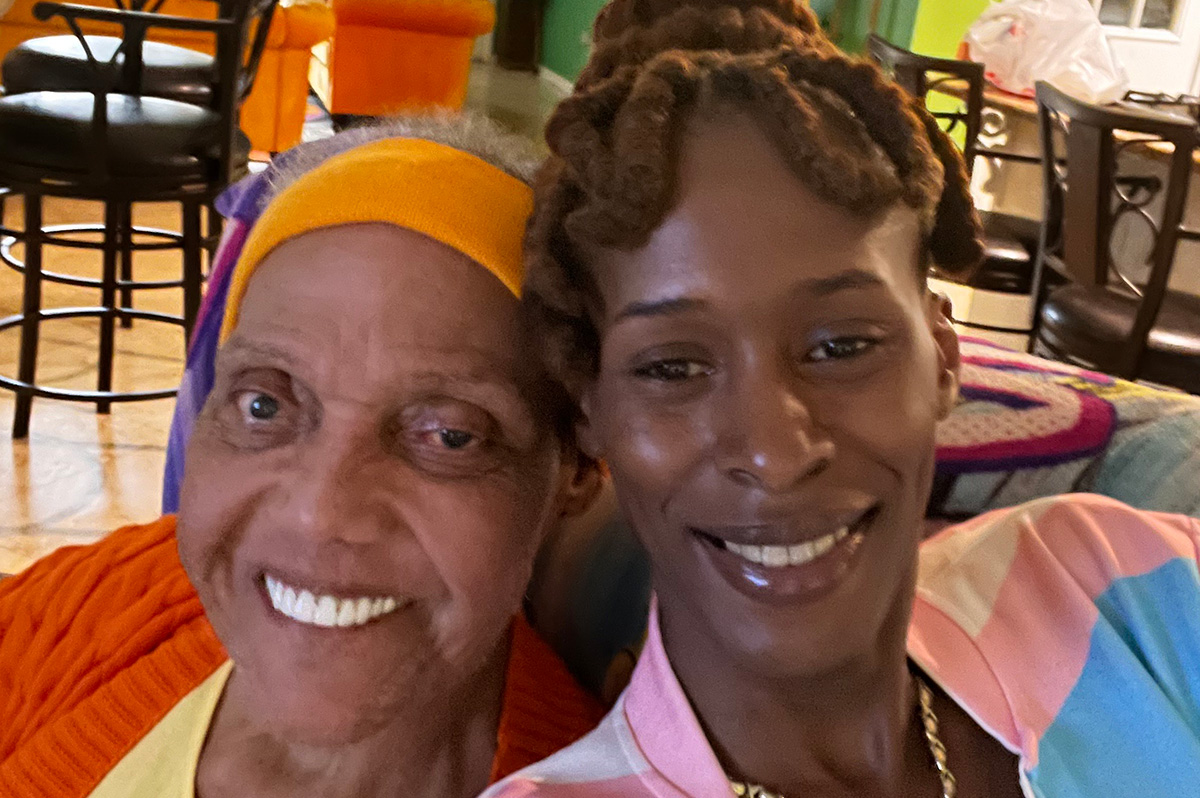
Chastity Bowick is an award-winning activist, civil rights leader, and transgender health advocate who has dedicated her career to empowering transgender and gender-nonconforming communities. She led the Transgender Emergency Fund of Massachusetts for seven years, opening New England’s first trans transitional home, and now heads Chastity’s Consulting & Talent Group, LLC. In 2025, she became Interim Executive Director of the Marsha P. Johnson Institute, continuing her mission to advance equity, safety, and opportunity for trans people. Her leadership has earned her numerous honors recognizing her impact on social justice and community care.
Opinions
Democratic Socialism won’t win the whole country
We must work toward a blowout on Nov. 3, 2026

It was a great win for Zohran Mamdani, and his voters, in New York City. His message of hope and change clearly resonated with younger generations, and that is exciting. But while Democratic Socialism, and Eugene Debs, may be the future of New York City, they won’t win the country. Mamdani is a young, smart, charismatic, politician. He is a great speaker, and in his campaign made many promises. Keeping those promises won’t be easy, but whether he can keep them will be what he is judged on. I wish him much success as what he envisions is important. But as Democrats, we need to understand, his brand is not going to be what wins it for Democrats in 2026. It will not win the swing Districts we need. We know that by looking at history.
I am a proud New Yorker by birth. When traveling the nation as a teenager with the Boy Scouts, going by bus across the country to the 25th Jamboree in Colorado Springs, I understood we in New York were the different ones, not the rest of the nation. I understood at an early age how important it is to respect those differences and they still exist today. If we are to move the nation forward, we have to do it with respect, and together.
I looked at how Mikie Sherrill won the governorship in New Jersey, and Abigail Spanberger won in Virginia. Their strong messages, more in line with the majority of voters in the nation who see themselves as moderates, are likely to resonate with Democratic voters across the swing congressional districts Democrats need to win in 2026, if they are to take back the House. Based on exit polling their messages also invigorated many young voters. We will need everyone to take back Congress and doing so is a must if we are to save our country from the felon in the White House.
There are countless reasons to stop Trump. He wants to be a king, and has said so. He acts like a despot declaring war on foreign countries without congressional consent, and even declaring war on American cities. He doesn’t understand the United States is a nation of immigrants and without them we are in trouble. I guess the only immigrants he found of value were two of his wives, and he even screwed around on them. He uses ICE as if it were his personal Gestapo. He sends National Guard troops across the nation and into D.C. where some picked up trash in the parks and spread mulch. Not what they signed up for, and a total waste of taxpayer’s money. He threatens the world’s nations, allies, and foes alike, with tariffs that end up being a heavy tax on the American taxpayer. He pretends to negotiate deals, like one with China, not even getting us back to the positive relationship we had with them when Biden was president. Trump screws up everything he touches. He plays footsie with Putin. He refuses to actively support the brave people of Ukraine whose war against Russia is in essence, a proxy war with the West. He gives tax breaks to the rich, and is willing to close the government instead of ensuring everyone has affordable healthcare. He threatens the poor with starvation, and screws with the nation’s healthcare, destroying the CDC, and the National Institutes of Health (NIH), the world’s premier medical research institute. He threatens law firms, universities, and the media, holding them hostage for money. He uses the Department of Justice as his personal law firm to get revenge on anyone he thinks did him wrong. He fires thousands of government workers, and when his incompetent appointments screw up, has to rehire many. He is a grifter, exchanging favors for money for himself, with countries around the world. A plane from Qatar, and billions for his crypto company.
What Americans are seeing as the result of his incompetence, are prices for food, rent, and education, all going up. Farmers are suffering. All this is what Democrats will campaign on across the nation.
But they must also campaign on what they will do to make things better. They must talk to their constituents in each District, and determine the focus of their campaigns. What issues to campaign on. Those campaigns could look different in each District. That is how Democrats will win. That is how Democrats won last Tuesday, and that great start will lead to a huge Blue Blowout, on Tuesday, Nov. 3, 2026.
Peter Rosenstein is a longtime LGBTQ rights and Democratic Party activist.



